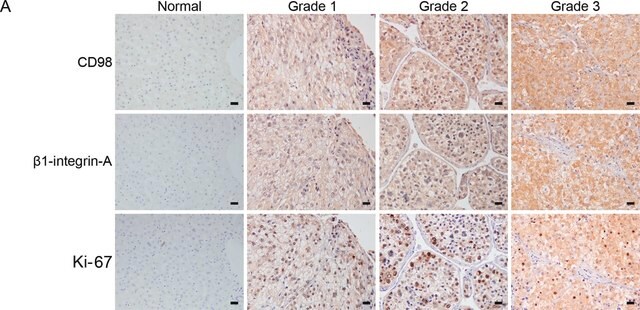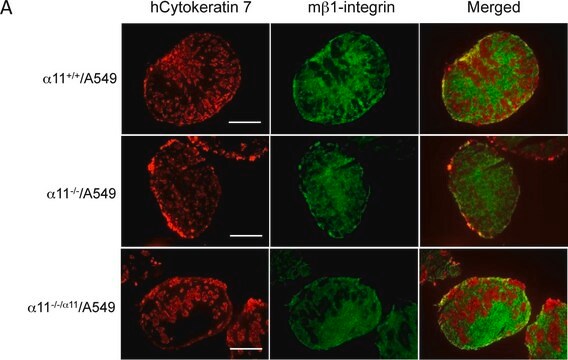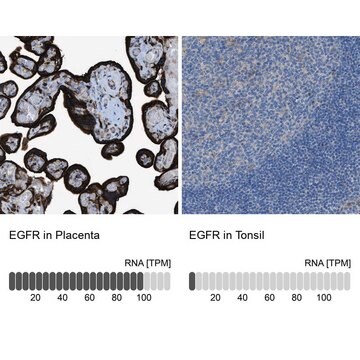MAB1900
Anti-Integrin β1D Antibody, CT cytoplasmic domain, clone 2B1
clone 2B1, Chemicon®, from mouse
Synonym(s):
CD29
About This Item
Recommended Products
biological source
mouse
Quality Level
antibody form
purified immunoglobulin
antibody product type
primary antibodies
clone
2B1, monoclonal
species reactivity
canine, human, mouse
manufacturer/tradename
Chemicon®
technique(s)
immunocytochemistry: suitable
immunohistochemistry: suitable
western blot: suitable
isotype
IgG1
NCBI accession no.
UniProt accession no.
shipped in
wet ice
target post-translational modification
unmodified
Gene Information
human ... ITGB1(3688)
General description
Specificity
Immunogen
Application
Cell Structure
Integrins
Immunocytochemistry:
Immunohistochemistry: 1:25-1:200. Frozen, unfixed tissue sections, post-fixed with 2% PFA after primary and secondary antibody additions {van der Flier, 1997}. Alternatively, 4-7μm cyrosections fixed with cold acetone for 2 minutes and stored at -80°C until used. Airdried sections are rehydrated in PBS prior to use; detection via ABC systems is encouraged.
Optimal working dilutions must be determined by the end user.
Physical form
Storage and Stability
Other Notes
Legal Information
Disclaimer
Not finding the right product?
Try our Product Selector Tool.
recommended
Storage Class Code
12 - Non Combustible Liquids
WGK
WGK 2
Flash Point(F)
Not applicable
Flash Point(C)
Not applicable
Regulatory Listings
Regulatory Listings are mainly provided for chemical products. Only limited information can be provided here for non-chemical products. No entry means none of the components are listed. It is the user’s obligation to ensure the safe and legal use of the product.
JAN Code
MAB1900:
Certificates of Analysis (COA)
Search for Certificates of Analysis (COA) by entering the products Lot/Batch Number. Lot and Batch Numbers can be found on a product’s label following the words ‘Lot’ or ‘Batch’.
Already Own This Product?
Find documentation for the products that you have recently purchased in the Document Library.
Our team of scientists has experience in all areas of research including Life Science, Material Science, Chemical Synthesis, Chromatography, Analytical and many others.
Contact Technical Service







